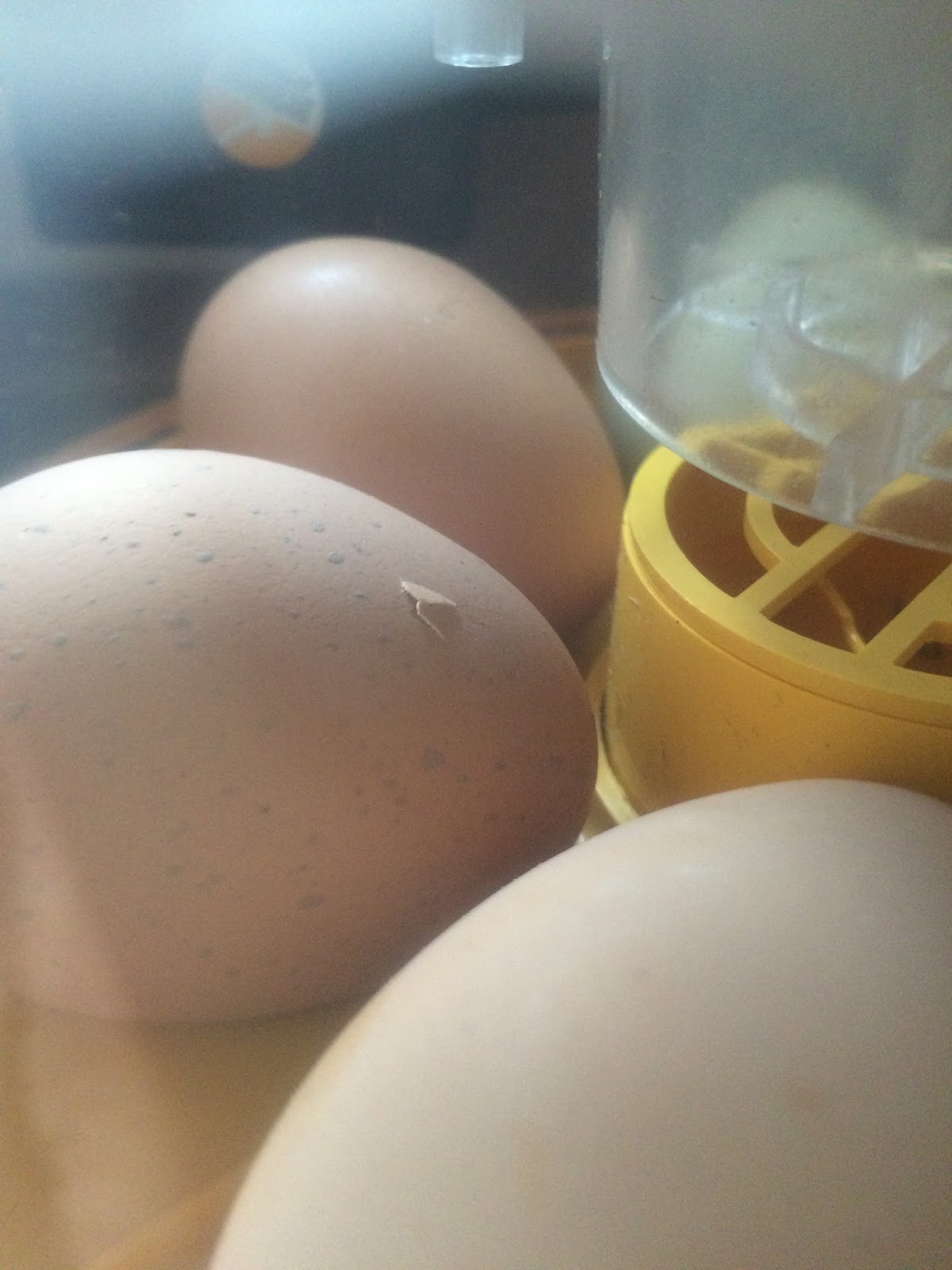So I dusted off the incubator and chose out 7 nice eggs. I thought it would be best to have a full blooded Black Australorp, so I chose out 6 of the brown eggs from the Australorp hens. Then for fun, I chose one green egg from the brown Ameraucana hens, to see what a Australorp/Ameraucana cross would look like.
We had a power outage around day 14 and the incubator wasn't on for about 4 hours. The temperature dropped from the stable 99 degrees down to about 75 degrees. We thought the chicks would have probably died, but we decided to finish off the last 7 days and hope for the best.
We're so glad we did, because on day 21, just like clockwork, the chicks started breaking through the shells. Two of the chicks were slow to hatch out, but after 24 hours, all 7 had hatched.
I was caught off guard because I didn't expect any of the chicks to hatch. So I hurried to set up a little brooding box for the 7 chicks in the garage. I had an empty plastic storage tub which I thought would do nicely for awhile. What I didn't do was check the heat lamp to make sure it was heating to the right temperature. After the first day I realized it wasn't getting much above 85 degrees, so I bought a new bulb. I could tell almost as soon as I plugged it in that it was much hotter than the old one. Two chicks died in the first two days (possibly the two late hatchers), so I'm guessing it was because they weren't warm enough.
But I have five cute little black chicks for now, and I'm happy with that. They all look alike so I can't tell which one is the mixed breed chick.
 |
| On Day 21, all the eggs had cracks somewhere. |
 |
| This is the first chick to hatch. |
 |
| You can just see a tiny white dot inside the egg - that's the chick's beak. |
 |
| It gets a little crowded as they hatch, but I left them inside for 24 hours to make sure they were dry and warm. |
 |
| It wasn't warm enough for them the first day. |
 |
| They usually stay huddled together. |
 |
| They were lined up one time I went to check on them. |
 |
| Within a week, the feathers on their wings were growing. |































